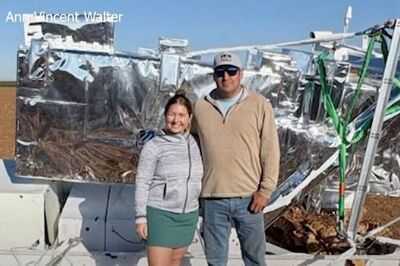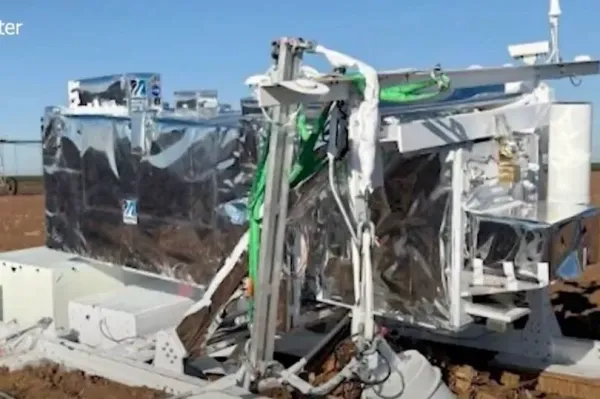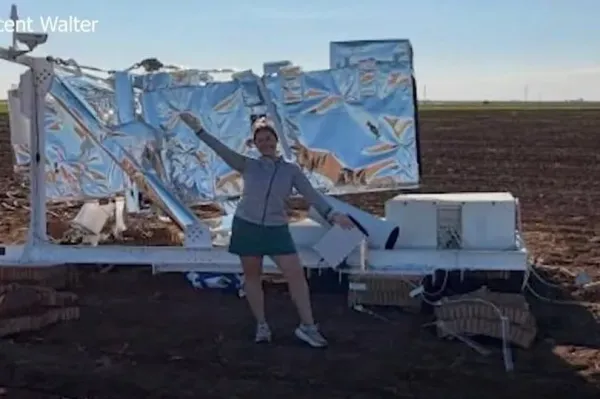
A colossal piece of NASA research kit landed on a peaceful family farm in West Texas this week.
The Walter family were going about their usual Thursday routine when an enormous parachute appeared in the sky. The family, intrigued by the unusual sight, snapped photos and videos before promptly ringing the Hale County Sheriff's Office to report it.
The deputies informed the Walters that the National Aeronautics and Space Administration was already scouring the area for a lost piece of experimental kit, according to the Chronicle. The family eventually located the equipment, a massive device the size of an SUV, sitting in an open field, as per the Chronicle.
A team from NASA's Columbia Scientific Balloon Facility, led by a chap known only as Garrison, swiftly arrived at the farm to secure the balloon, as reported by the Daily Mail.

READ MORE: Two girls found dead on train after deadly Tiktok game goes horribly wrong
READ MORE: At least 14 dead after school collapses in Indonesia with nearly 50 students still missing
Local officials stated that the balloon had been launched a day earlier, from Fort Sumner, New Mexico. It floated over Clovis and Portales before drifting into West Texas, and landing on the Walter's property, reports the Mirror US.
NASA's balloon programme utilises high-altitude, unmanned balloons that can ascend up to 120,000 feet, nearly 23 miles into the atmosphere, as reported by the Chronicle.
NASA balloons have various duties, including studying cosmic rays to test instruments that could be launched into space.
"I'm so glad that we saw this in the sky," Amy Walter told the Chronicle. "What a cool experience."
NASA has been in the news this week after it suggested that a man-made structure in China had managed to tweak Earth's passage of time.The space agency stated that China's massive Three Gorges Dam has nudged Earth's axis by nearly an inch since its construction 18 years ago, causing our days to lengthen ever so slightly.

Just last month, NASA sent three satellites into space aboard a SpaceX Falcon 9 from the Kennedy Space Center in Florida to better understand space weather and its effects on Earth.
The agency explained: "The IMAP spacecraft will study how the Sun's energy and particles interact with the heliosphere - an enormous protective bubble of space around our solar system - to enhance our understanding of space weather, cosmic radiation, and their impacts on Earth and human and robotic space explorers."